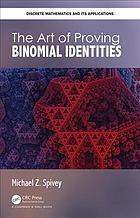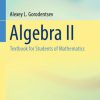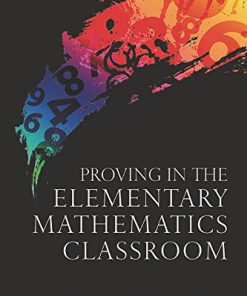The Art of Proving Binomial Identities 1st Edition by Michael Spivey 1351215800 9781351215800
$50.00 Original price was: $50.00.$25.00Current price is: $25.00.
The Art of Proving Binomial Identities 1st Edition by Michael Z. Spivey – Ebook PDF Instant Download/DeliveryISBN: 1351215800, 9781351215800
Full download The Art of Proving Binomial Identities 1st Edition after payment.

Product details:
ISBN-10 : 1351215800
ISBN-13 : 9781351215800
Author: Michael Z. Spivey
The Art of Proving Binomial Identities accomplishes two goals: (1) It provides a unified treatment of the binomial coefficients, and (2) Brings together much of the undergraduate mathematics curriculum via one theme (the binomial coefficients). The binomial coefficients arise in a variety of areas of mathematics: combinatorics, of course, but also basic algebra (binomial theorem), infinite series (Newton’s binomial series), differentiation (Leibniz’s generalized product rule), special functions (the beta and gamma functions), probability, statistics, number theory, finite difference calculus, algorithm analysis, and even statistical mechanics. The book is very suitable for advanced undergraduates or beginning graduate students and includes various exercises asking them to prove identities. Students will find that the text and notes at the end of the chapters encourages them to look at binomial coefficients from different angles. With this learning experience, students will be able to understand binomial coefficients in a new way. Features: Provides a unified treatment of many of the techniques for proving binomial coefficient identities. Ties together several of the courses in the undergraduate mathematics curriculum via a single theme. A textbook for a capstone or senior seminar course in mathematics. Contains several results by the author on proof techniques for binomial coefficients that are not well-known. Ideal for self-study, it contains a large number of exercises at the end of each chapter, with hints or solutions for every exercise at the end of the book.
The Art of Proving Binomial Identities 1st Table of contents:
1 Introducing the Binomial Coefficients
1.1 Exercises
1.2 Notes
2 Basic Techniques
2.1 The Generalized Binomial Coefficient
2.2 Negative Upper Indices
2.3 The Absorption Identity
2.4 Binomial Inversion
2.5 Exercises
2.6 Notes
3 Combinatorics
3.1 Basic Arguments
3.2 Lattice Path Counting
3.3 Choosing with Replacement
3.4 Alternating Binomial Sums and Involutions
3.5 The Principle of Inclusion-Exclusion
3.6 Exercises
3.7 Notes
4 Calculus
4.1 Differentiation
4.2 Integration
4.3 The Beta Integral and the Gamma Function
4.4 Exercises
4.5 Notes
5 Probability
5.1 Binomial, Negative Binomial, and Hypergeometric Distributions
5.2 Expected Values and Moments
5.3 Inclusion-Exclusion Revisited
5.4 The Beta Integral Revisited
5.5 Exercises
5.6 Notes
6 Generating Functions
6.1 The Idea of a Generating Function
6.2 Ordinary Generating Functions in Action
6.3 Exponential Generating Functions
6.4 Exercises
6.5 Notes
7 Recurrence Relations and Finite Differences
7.1 Single-Variable Recurrence Relations
7.2 Finite Differences
7.3 Two-Variable Recurrence Relations
7.4 Exercises
7.5 Notes
8 Special Numbers
8.1 Fibonacci Numbers
8.2 Stirling Numbers
8.3 Bell Numbers
8.4 Lah Numbers
8.5 Catalan Numbers and More Lattice Path Counting
8.6 Bernoulli Numbers
8.7 The On-Line Encyclopedia of Integer Sequences
8.8 Exercises
8.9 Notes
9 Miscellaneous Techniques
9.1 Complex Numbers
9.2 Linear Algebra
9.3 Exercises
9.4 Notes
10 Mechanical Summation
10.1 Hypergeometric Series
10.2 Antidifferences of Hypergeometric Terms
10.3 Definite Summation of Hypergeometric Terms
10.4 Exercises
10.5 Notes
People also search for The Art of Proving Binomial Identities 1st:
attention human brain
neurobiology of attention
attention in human computer interaction
emotion and attention
emotional processing and attention
Tags: The Art, Proving Binomial, Identities, Michael Spivey
You may also like…
Politics & Philosophy - Anthropology
Science (General)
Computers - Hardware
Relationships & Lifestyle - Psychological Self-Help
Arts - Photography
Black White Photography The timeless art of monochrome 1st Edition Michael Freeman
Mathematics - Geometry and Topology
Geometric Inequalities Methods of Proving 1st Edition by Hayk Sedrakyan 3319550799 9783319550794
Mathematics
Chemistry












